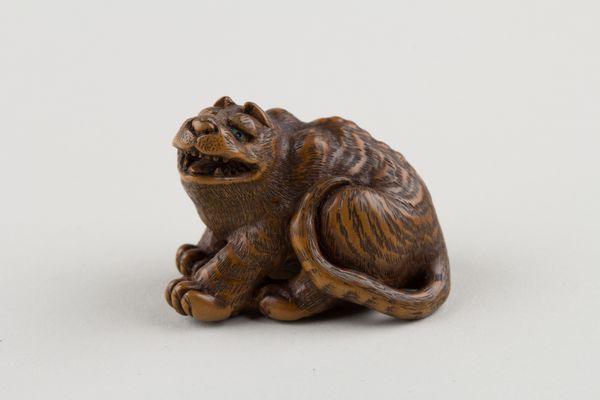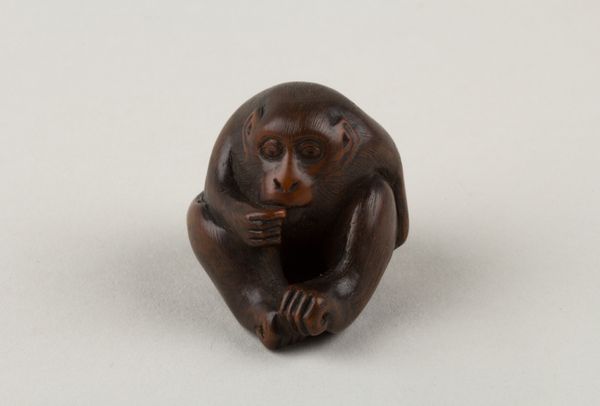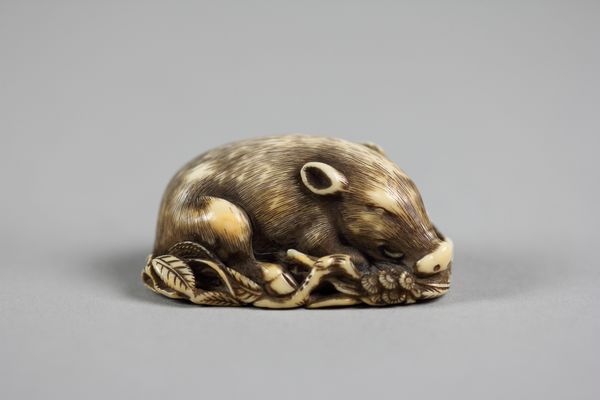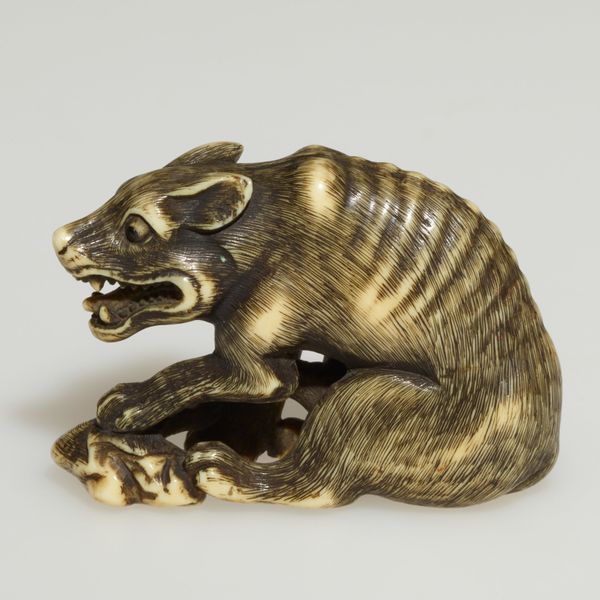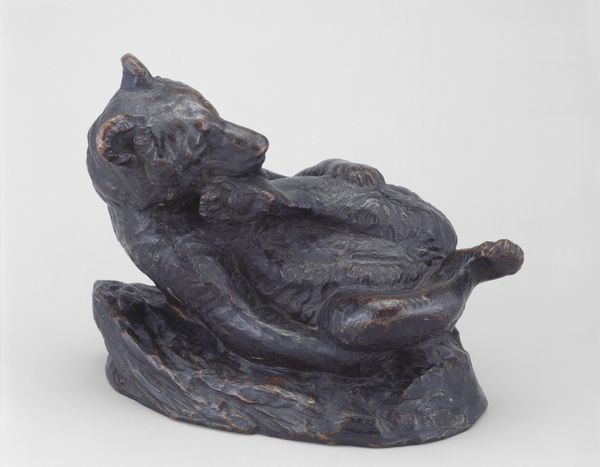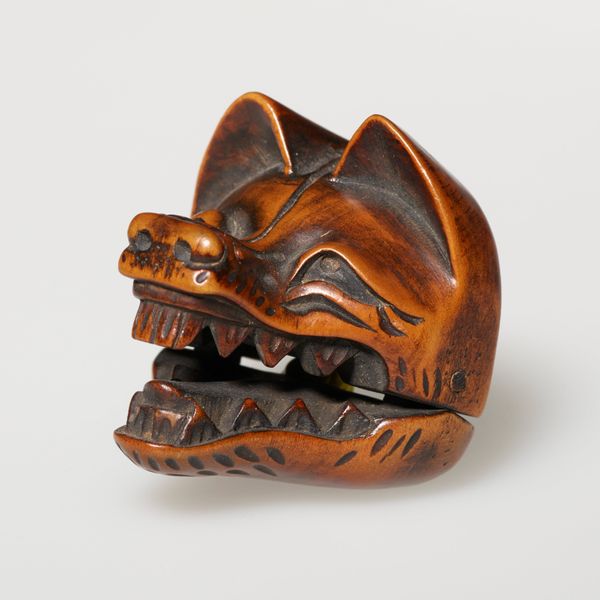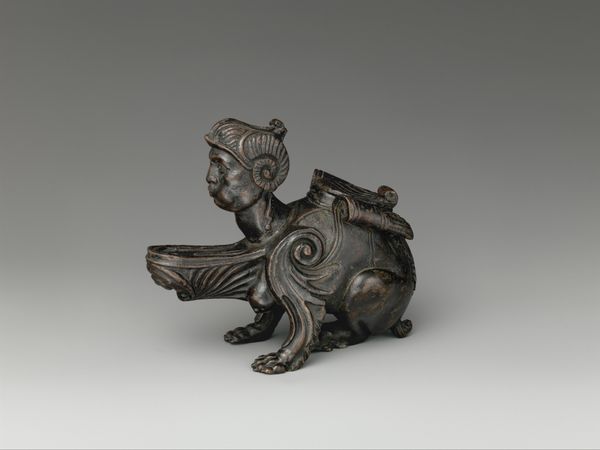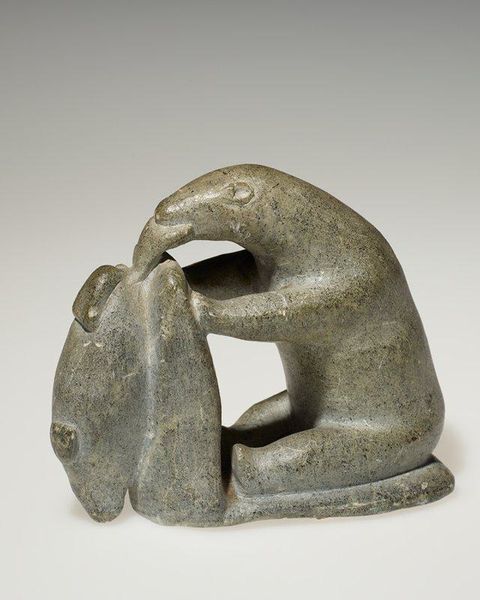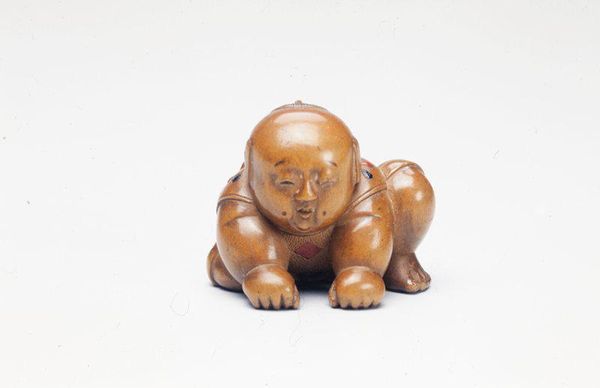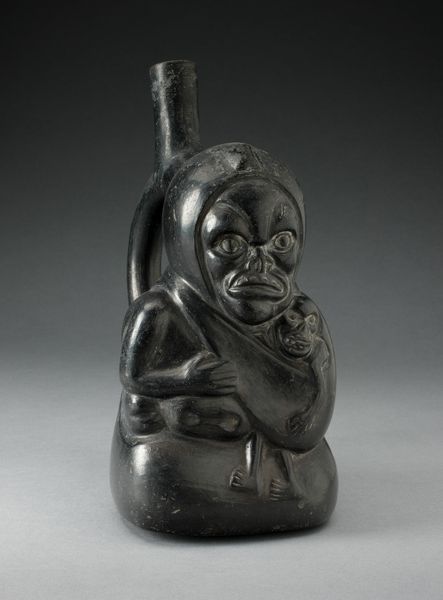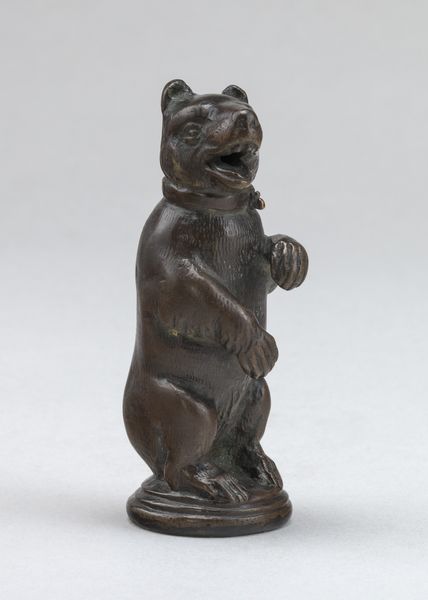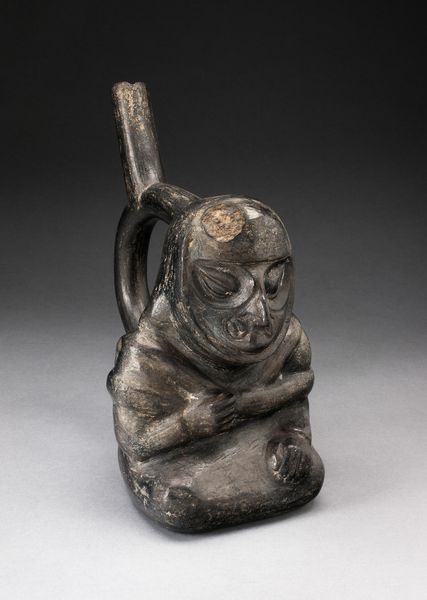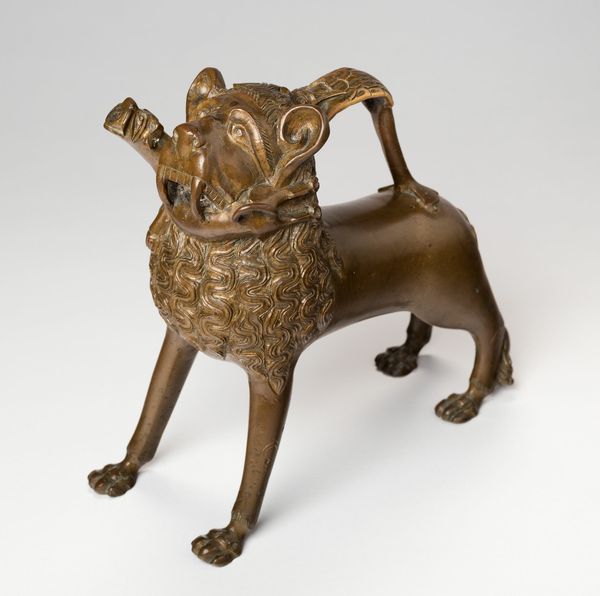
carving, sculpture, wood
#
carving
#
asian-art
#
figuration
#
sculpture
#
wood
Copyright: Rijks Museum: Open Domain
Editor: This is a netsuke, a small wooden carving from around 1800 to 1850, carved by Tomotada, and it depicts a wolf with a turtle. The wolf’s expression is so fierce! What cultural narratives are at play here? Curator: I’m immediately drawn to the relationship between predator and prey depicted. Consider the social hierarchy embedded in feudal Japan. Do you think the wolf represents a dominant class or power structure, perhaps a samurai or ruling family? Editor: Maybe, but the netsuke are, right, supposed to be worn by all classes? Is it possible the artist is playing with those power dynamics, turning them on their head? Curator: Exactly! Consider that the turtle is often a symbol of longevity and stability. Is the artist suggesting that the established order, though seemingly vulnerable, possesses a hidden resilience, able to withstand even the most fearsome predator? How does this connect to political and social unrest during the Edo period? Editor: I see. So, the netsuke might be offering a commentary on power, class, and societal change, masked as an animalistic scene. Curator: Precisely! And what about the choice of materials? How does the smooth, tactile quality of the wood influence our perception of these power dynamics? Does it soften the message, making it more palatable for a wider audience? Editor: Interesting point! The wood does make it feel more intimate and less confrontational. I hadn’t considered the role of materiality in mediating that social critique. Curator: So, the symbolism, social context, material - each is a point for social inquiry, as a lens to understand society. What have you observed? Editor: Now I see it’s more than just a wolf and a turtle. It is about critiquing and playing with ideas about power in 19th century Japan.
Comments
No comments
Be the first to comment and join the conversation on the ultimate creative platform.

